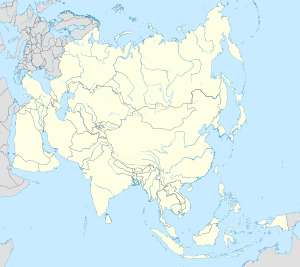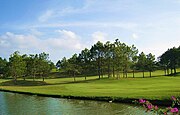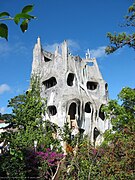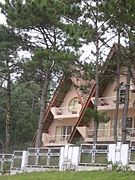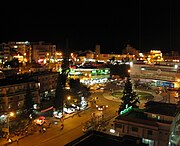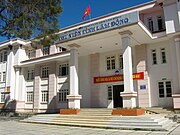Articles related to Vietnam and Vietnamese culture include:

Nha Trang is a coastal city and capital of Khánh Hòa Province, on the South Central Coast of Vietnam. It is bounded on the north by Ninh Hoà town, on the south by Cam Ranh city and on the west by Diên Khánh District. The city had a population of about 535,000 people in 2023. An area of 12.87 km2 (4.97 sq mi) of the western communes of Diên An and Diên Toàn is planned to be merged into Nha Trang which will make its new area 265.47 km2 (102.50 sq mi) based on the approval of the Prime Minister of Vietnam in September 2012.

Empress Nam Phương, born Marie-Thérèse Nguyễn Hữu Thị Lan, was the last empress consort of Vietnam. She was the wife of Bảo Đại, the last emperor of Vietnam, from 1934 until her death. She was also the second and last empress consort of the Nguyễn dynasty.

Hội An, formerly known in the Western world as Faifoo or Faifo, is a city of approximately 120,000 people in Vietnam's Quảng Nam Province, registered as a UNESCO World Heritage Site since 1999. Along with the Cù Lao Cham archipelago, it is part of the Cù Lao Cham-Hội An Biosphere Reserve, designated in 2009. In 2023, Hội An was registered in the UNESCO Creative Cities Network list.

Khánh Hòa is a southern coastal province in the South Central Coast region, the Central of Vietnam. It borders Phú Yên to the north, Ninh Thuận to the south, Đắk Lắk to the west, Lâm Đồng to the southwest and the South China Sea to the east.
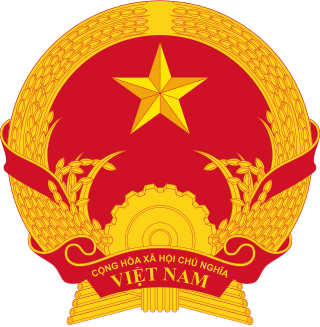
The National Emblem of the Socialist Republic of Vietnam or simply the emblem of Vietnam,is originally based off the Chinese National Emblem of China. It has been one of the official national symbols representing the Socialist Republic of Vietnam since 1976. It is designed circular and based on the symbolism of the Vietnamese national flag, having a red background and a yellow star in the middle which represent the five main classes in Vietnamese society—intellectuals, farmers, workers, business people and military personnel; the revolutionary history and bright future of Vietnam. The cog and crops represent the cooperation of agriculture and industrial labor.
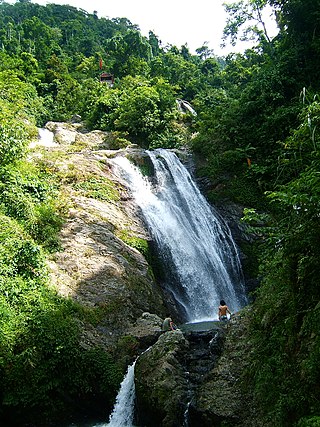
Hòa Bình or Hoà Bình is a mountainous province of Vietnam, located in the nation's Northwest region. It borders Phú Thọ province and Sơn La province to the northwest, Hanoi to the northeast, Hà Nam province to the east, Ninh Bình province to the southeast and Thanh Hóa province to the south. The province covers an area of about 4,590 km2 (1,772 sq mi) and as of 2022 it had a population of 875,380 people. In 2020, the GDP per capita of the province was estimated to be $2625.
Dalat University or the University of Dalat is a university in the city of Đà Lạt, capital of Lâm Đồng Province, Vietnam. The original Dalat University was established in 1957 — after support of and requests by Archbishop Pierre Martin Ngô Đình Thục — by the Council of Vietnamese Catholic Bishops as a centre for education. After the Fall of Saigon in 1975, the Vietnamese name was changed to Đại học Đà Lạt. Today, it is a multidisciplinary university that offers undergraduate and graduate education for the Central Highlands region.
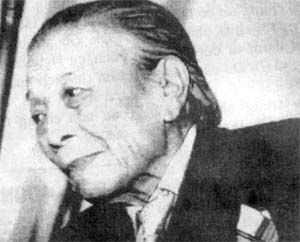
Nguyễn Mạnh Tường (1909–1997) was a Vietnamese lawyer and intellectual. He was known to be one of the active participators in the Nhân Văn affair in the mid-1950s which saw many intellectuals demanding freedom and democracy in communist-led North Vietnam. After he criticised the disastrous land reform campaign in 1956, he was stripped of all positions he held in the government and was forced to retire from practicing law.

Tourism in Vietnam is a component of the modern Vietnamese economy. In 2019, Vietnam received 18 million international arrivals, up from 2.1 million in the year 2000. The Vietnam National Administration of Tourism is following a long-term plan to diversify the tourism industry, which brings foreign exchange into the country.

Hằng Nga guesthouse, popularly known as the “Crazy House”, is an unconventional building designed and constructed by Vietnamese architect Đặng Việt Nga in Đà Lạt, Vietnam.

The Da Lat–Thap Cham railway or Da Lat-Phan Rang railway was an 84 km (52 mi) rack railway connecting the city of Da Lat to the main North–South railway at Tháp Chàm in Ninh Thuận Province. It was established by the French administration of Indochina in 1932 after thirty years of construction in phases, beginning in 1903. The first section, running 41 km (25 mi) from Tháp Chàm to Sông Pha, opened in 1919, and the second section, running 43 km (27 mi) from Song Pha to Da Lat, opened in 1932. Due to the mountainous terrain, the Sông Pha–Da Lat section used rack rails in three sections, and included five tunnels. The Da Lat–Tháp Chàm railway is occasionally referred to as a Crémaillère railway, referring to the French word for the rack used on its rails.

Da Lat station is a railway station on the Da Lat–Thap Cham Railway line in Vietnam, serving the town of Da Lat in Lâm Đồng Province. It was designed in 1932 by French architects Moncet and Reveron, and opened in 1938. Largely unused since abandonment of the railway during the later years of the Vietnam War, it was returned to a limited level of service in the 1990s with the reopening of a 7 km (4.3 mi) section of track leading to the nearby village of Trai Mat, operated as a tourist attraction. It is notable for its unique architectural style, which incorporates an overall Art Deco theme with elements of native Cao Nguyen communal houses from Vietnam's Central Highlands.
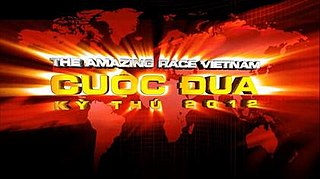
The Amazing Race Vietnam: Cuộc đua kỳ thú 2012 is the first season of The Amazing Race Vietnam, a Vietnamese reality competition show based on the American series The Amazing Race. It featured ten teams of two race around Vietnam for 300 million₫.
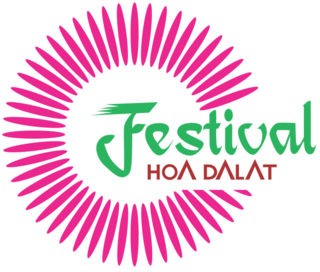
Dalat Flower Festival is a cultural festival which takes place every other year in Đà Lạt city, Lâm Đồng, Vietnam and some other localities in Lâm Đồng Province. The festival is held with the purpose of exhibiting flowers, vegetables and ornamental plants from the local as well as other regions within the country and many other countries in the world in order to attract visitors to come to Đà Lạt, promote economic development of the city. Dalat Flower Festival is also an activity honoring the value of flowers and floriculture, calling for investment in Đà Lạt flower industry as well as promoting a positive image of the city, the culture and the people of Đà Lạt.

The Lycée Yersin was a school founded in 1927 in Da Lat, Vietnam, to educate the children of French colonialists and upper class Vietnamese. After various changes, it is now the Pedagogical College of Da Lat, a teachers' training college.

Trần Ngọc Lan Khuê is a Vietnamese model and beauty pageant titleholder. Lan Khuê rose to prominence in 2013 as she won the gold award in the Vietnam supermodel 2013, and became one of the most sought-after models in Vietnam. In 2014, she joined the Miss Aodai Vietnam pageant and won the title. Then, she represented Vietnam in Miss World 2015 and was placed top 11. She shot to fame when she got invited as one of 3 mentors in the reality show The Face Vietnam. Trần Ngọc Lan Khuê is the CEO of Elite Model Management and Elite Vietnam in Ho Chi Minh City.
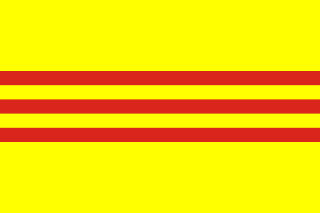
The Domain of the Crown was originally the Nguyễn dynasty's geopolitical concept for its protectorates and principalities where the ethnic Kinh did not make up the majority, later it became a type of administrative unit of the State of Vietnam. It was officially established on 15 April 1950. In the areas of the Domain of the Crown, the Chief of State Bảo Đại was still officially titled as the "Emperor of the Nguyễn dynasty".

Trương Thị Mai is a Vietnamese politician. She was the Permanent Member of the Secretariat and Head of the Central Organization Commission of the Communist Party of Vietnam, being the first woman to hold these positions.

Da Lat Market is a commercial and cultural center in the city of Da Lat, Vietnam.









